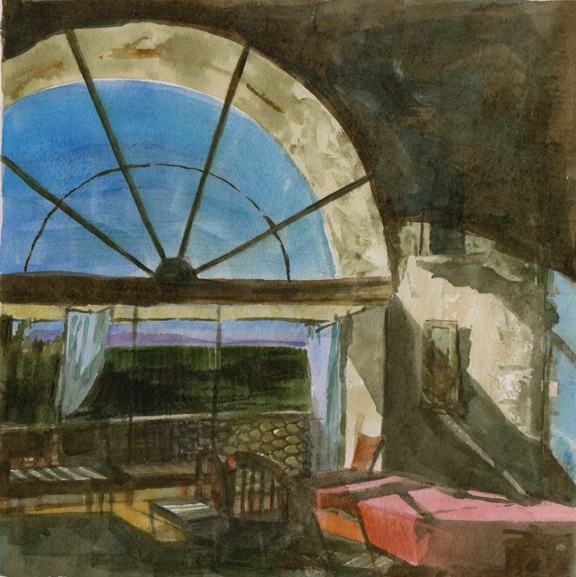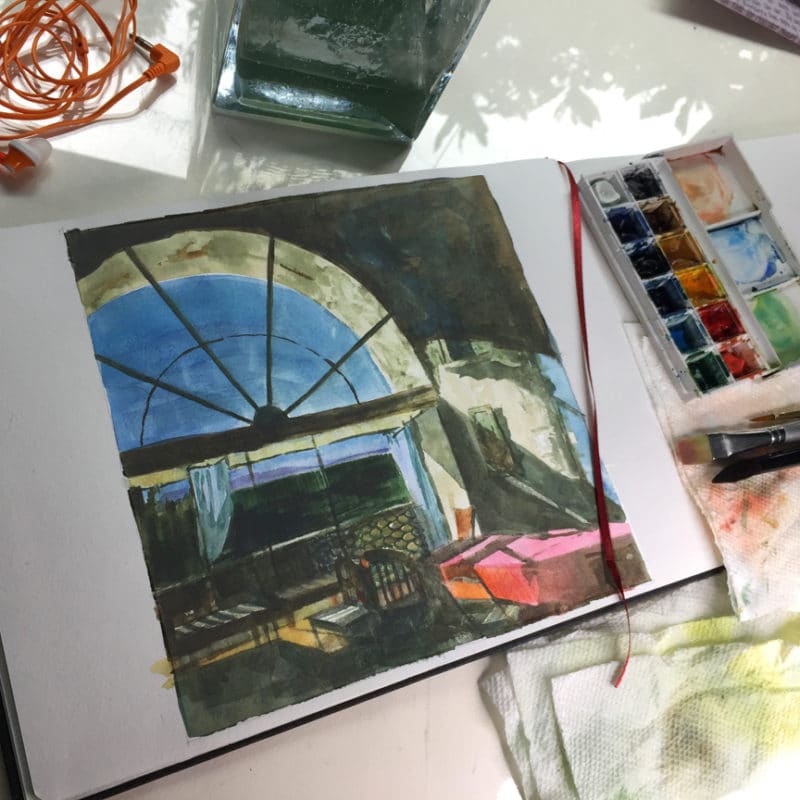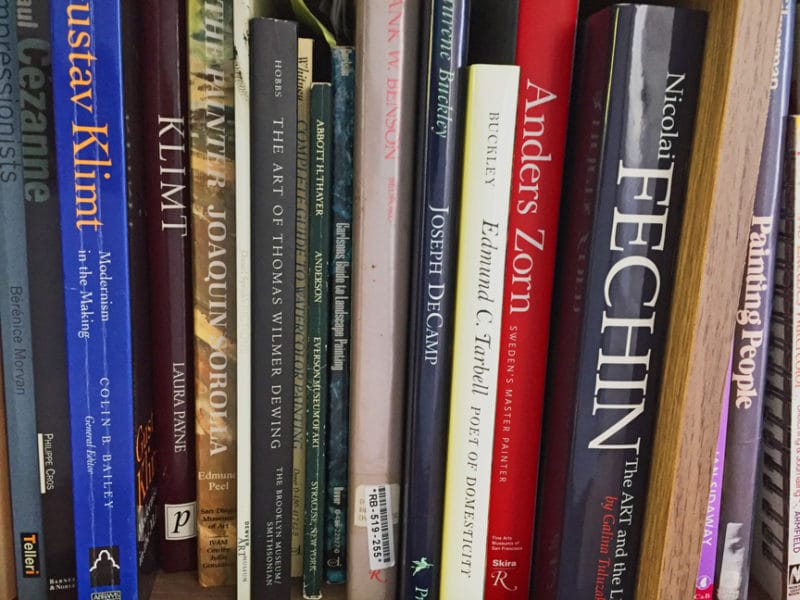
Making Art Before we had Books
I just finished listening to a book tracing the history of Leonardo Da Vinci’s drawing of Vitruvian Man. If your art includes the figure, and you’re interested in the history of learning, check it out here.
Toby Lester begins with the Roman military engineer, Vitruvius (born c. 80–70 BC, died after c. 15 BC), who authored ten volumes of architecture analysis. Imagine – ten books describing (in hand-written latin) the constructive and aesthetic analysis of arches, columns, aqueducts, bridges and harbors – without a single illustration – no diagrams, photos or drawings. With a scant 30-40% literacy at the time, it’s a wonder his treatise was preserved.
Inspired 1500 Years Later
Leonardo Da Vinci acquired a copy of the ten volumes 1500 years after they were written. The printing press was a new invention, so it’s assumed the ten volumes by Vitruvius in DaVinci’s library were hand-copied. How did one go about building a library back then? At the time, functional anatomy of the human body was still a mystery. Learning what lay under our skin, and how it all worked, was pondered by witnessing public dissections of criminal cadavers. A resident butcher often announced proclamations about each body part’s purpose to a gathered audience of locals. Dissections of the brain offered presumptions that the cerebellum was firm, so it must therefore control the muscles, and the cerebrum was soft, so it must be the source of all senses. With that in mind, you can probably imagine the endeavor Leonardo Da Vinci took on to study and illustrate every element of human anatomy, beginning with the description of human measurements in one of the books by Vitruvius.

Humans Mirror the Cosmos
Vitruvius documented (again, with no illustrations) that man is the measure of all things. Our body measurements mirror every ratio and proportion by which God reveals the secrets of nature. In other words, we humans were considered a microcosm reflecting the workings of the universe. With that thought, all measurements and aesthetic symmetry could be generated by measuring ourselves against ourselves. A palm measures four fingers. A foot is four palms. A forearm is six palms, etc. Those same measurements were used to describe the construction and design of all the architecture in Vitruvius’s books. Leonardo’s drawing gave form to that text by rendering a beautiful male figure whose outstretched arms and legs fit perfectly inside the bounds of a divine circle and an earthly square.
It’s an idealized self-portrait in which Leonardo, stripped down to his essence, takes his own measure, and in doing so embodies a timeless human hope: that we just might have the power of mind to figure out how we fit into the grand scheme of things. ~Toby Lester
The Pursuit of Knowledge
Leonardo Da Vinci was a riveting character who straddled art, science and engineering. The man had remarkable imagination! Leonardo was self-educated, abundantly talented, relentlessly curious, and a vegetarian. He was fueled by an obsessive pursuit of understanding, and perhaps as a result, even with super-power levels of creative genius, he was unable to retain full-time employment because he failed to meet deadlines. Our dear Leonardo was prone to wandering off to follow the trail of a new exploration or creative project, while leaving secured commissions uncompleted. He was perpetually transfixed by experimental science, botany, math, cartography, pondering God and the universe, music (he sang & played), designing weaponry, and architecture (he oversaw the construction of a canal system in Milan). Do you know talented artists who suffer any of these meandering-interest challenges? 🙂
Art Heroes
There’s a new book coming out next month on Leonardo Da Vinci by Walter Isaacson, the author of deeply researched books on Ben Franklin, Albert Einstein and Steve Jobs. He also hosts a podcast on the effects of technology on business. I’m listening to Mr. Isaacson’s book The Innovators now, and if you’re interested in hearing about it when I finish, let me know in the comments.

Diving into the lives of artists from long ago gives me such relief and perspective on my own artistic journey. Understanding the trials of my art-heroes dulls the sharpness of my shortcomings. It seems that all artists must cultivate a hefty volume of perseverance. That fact gives me pause to pull up my determination-socks, and march forward.
What do you read to keep your head in your art supplies? Do you research your art-heroes? If you’ve found something inspiring in a book, share the title in the comments so we can all check it out.
Thanks for stopping by, and I’ll see you in the next post,
Belinda
P.S. I just published a newsletter with fun links and details on a Labor Day art-sale; you can check it out here.
P.P.S. You’re welcome to subscribe (free) to get this blog via email here, or my newsletter via email here.
Art Quote
A good painter has two chief objects to paint: man and the intention of his soul. The former is easy, the latter hard. ~Leonardo da Vinci (c. 1490)


Thanks, again, Belinda, for this informative information! I do enjoy your blogs! Very insightful.
Hi Bonnie, Thanks for the feedback – I’m so glad you’re finding these missives interesting! I totally appreciate your encouragement! XOXO, B.
Fascinating post – piques my curiosity. ? Would love to read your review of The Innovators. Also, great study of that wonderful room/window! Keep up the great work!
Hi K! Thanks for your note and your rah-rah’s! I will definitely share thoughts about the Innovators book. Reading about smart people and all the trials and tribulations they encountered on the way to success is always enlightening. Hopefully, this book will add fuel to my fire, and maybe yours too! Have a great weekend and I’ll see you in the next post! 🙂
That is fascinating!